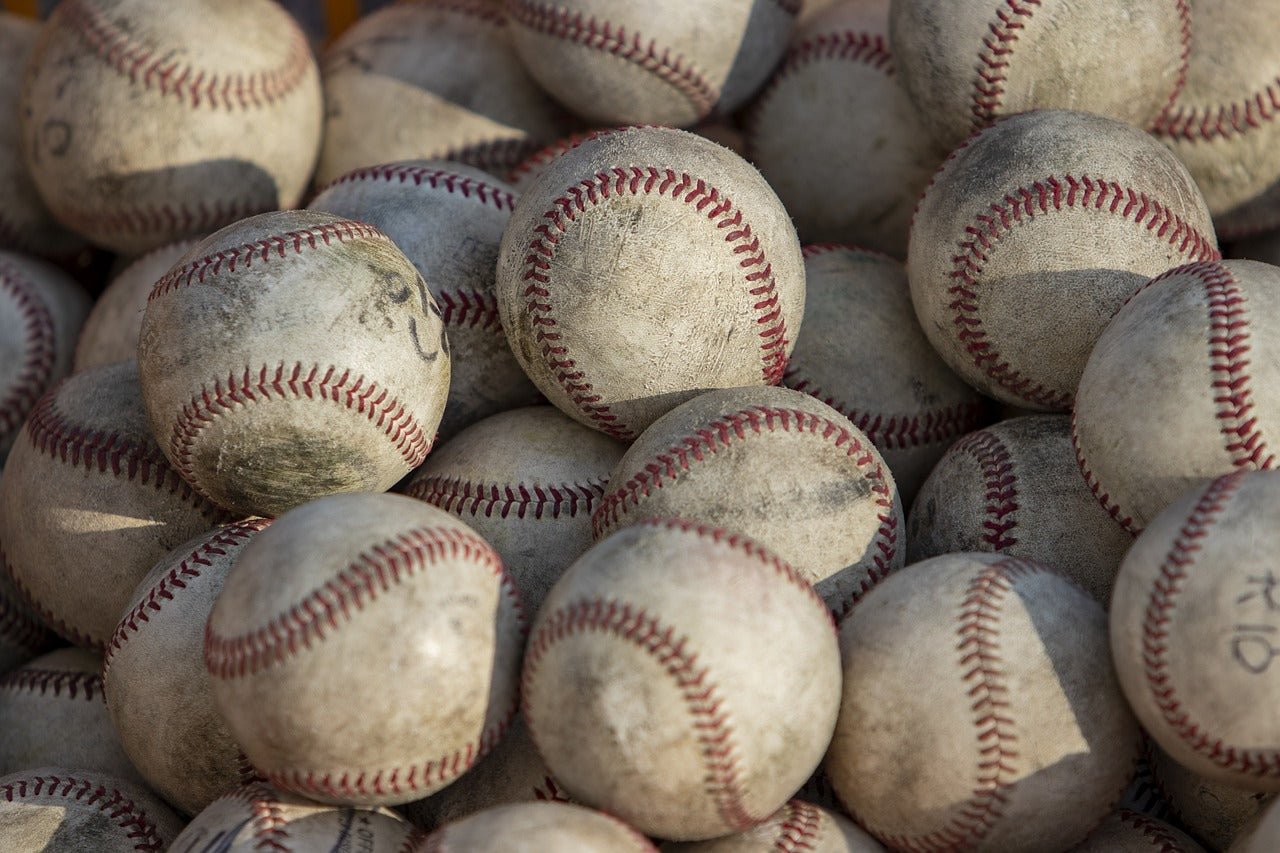Decorating baseballs with vibrant prints and colors is a creative endeavor that transforms ordinary sports equipment into personalized masterpieces. Whether you're a sports enthusiast looking to commemorate a special game, an artist seeking a new canvas, or someone interested in crafting unique gifts, customizing baseballs offers a fulfilling and enjoyable experience.
This comprehensive guide will walk you through the process, from understanding the significance of personalized baseballs to exploring various decoration techniques, ensuring your creations are both eye-catching and enduring.
Overview on Custom Baseball Art
The Significance of Personalized Baseballs
Baseballs have long held a cherished place in sports culture, symbolizing not just the game itself but also the memories and emotions associated with it. Personalizing baseballs elevates their sentimental value, turning them into treasured keepsakes.
Historically, fans have sought autographed balls as prized possessions, but the evolution of custom baseball art has allowed individuals to create their own meaningful designs. These customized pieces serve as tangible reminders of personal achievements, favorite teams, or memorable games, bridging the gap between sports and personal expression.
Applications and Occasions
Decorated baseballs are versatile and can be tailored for various occasions:
-
Gifts: A hand-painted baseball makes for a thoughtful and unique present for birthdays, anniversaries, or holidays, especially for sports enthusiasts.
-
Commemorative Items: Celebrate milestones such as a child's first home run, a team's championship win, or personal sporting achievements by creating a customized baseball.
-
Decorative Pieces: Incorporate custom baseball art into home or office décor, showcasing team spirit or adding a sporty flair to the environment.
-
Fundraisers and Auctions: Unique, decorated baseballs can be used in charity events to raise funds, drawing interest from collectors and fans alike.
Gathering Essential Materials and Tools
Choosing the Right Baseballs
Selecting an appropriate baseball is crucial for achieving the desired artistic outcome:
-
New Baseballs: Offer a clean, smooth surface ideal for detailed artwork. They are readily available and provide a consistent canvas.
-
Used Baseballs: Carry a nostalgic charm, with scuffs and discolorations adding character. However, their uneven surfaces may pose challenges during decoration.
Consider the purpose of your project when choosing between new and used baseballs.
Selection of Art Supplies
To ensure vibrant and lasting designs, gather the following art supplies:
-
Paints: Acrylic paints are preferred for their versatility and durability on leather surfaces.
-
Markers: Permanent markers offer precision for intricate details and are available in various colors.
-
Brushes: A range of brush sizes allows for both broad strokes and fine details. Synthetic brushes are suitable for acrylic paints.
-
Sealants: A clear, protective sealant preserves the artwork and protects it from wear and environmental factors.
Additional Tools for Precision
Enhance the quality of your custom baseball art with these tools:
-
Stencils: Aid in creating consistent shapes and patterns, especially for logos or lettering.
-
Tape: Useful for masking areas to achieve clean lines and prevent paint bleed.
-
Cleaning Supplies: Isopropyl alcohol and lint-free cloths help prepare the baseball surface by removing oils and dirt.
-
Palette and Water Cup: Essential for mixing paints and cleaning brushes during the painting process.
Preparing the Baseball for Decoration
Cleaning Techniques
Proper preparation ensures optimal paint adhesion:
-
Surface Cleaning: Wipe the baseball with a cloth dampened with isopropyl alcohol to remove any oils, dirt, or residues. This step is crucial for both new and used baseballs.
-
Drying: Allow the baseball to air dry completely before proceeding to the next step.
Surface Priming
Applying a primer enhances paint adhesion and longevity:
-
Choosing a Primer: Select a primer compatible with leather surfaces.
-
Application: Using a brush, apply a thin, even layer of primer to the baseball. Avoid over-application to prevent drips.
-
Drying: Follow the primer manufacturer's instructions for drying time, ensuring the surface is fully cured before painting.
Exploring Decoration Techniques
Hand-Painting Designs
Hand-painting allows for complete creative control and personalization:
-
Design Planning: Sketch your design on paper to visualize the layout and colors.
-
Base Coating: Apply a base color if desired, allowing it to dry completely.
-
Detailing: Use fine brushes for intricate details, working in layers and allowing each layer to dry before adding the next.
-
Blending and Shading: Experiment with blending techniques to add depth and dimension to your artwork.
Using Decoupage and Transfers
Decoupage involves applying paper or fabric designs onto the baseball:
-
Design Selection: Choose images or patterns printed on thin paper.
-
Cutting: Carefully cut out the desired elements.
-
Adhesion: Apply a decoupage medium to the baseball, place the cut-out design, and smooth out any wrinkles or bubbles.
-
Sealing: Once the design is dry, brush on a thin coat of sealant or decoupage medium to lock it in place. Let it dry completely for a smooth, durable finish.
Applying Heat Transfer Vinyl (HTV)
Heat Transfer Vinyl is another creative way to apply custom designs:
-
Design Creation: Use graphic design software or online tools to create your design. Keep in mind the small, curved surface of the baseball when planning layout and details.
-
Cutting the Vinyl: Use a cutting machine like a Cricut or Silhouette to precisely cut your HTV design.
-
Positioning: Carefully place the design on the baseball and secure it with heat-resistant tape.
-
Applying Heat: Use a heat gun or a household iron (with caution) to apply heat evenly over the vinyl. Press gently but firmly, following the vinyl manufacturer’s heat settings and timing.
-
Peeling and Sealing: Let the vinyl cool slightly before peeling the backing off. Apply a sealant if desired to ensure longevity.
HTV is excellent for adding team logos, names, or numbers to DIY sports memorabilia.
Incorporating Mixed Media
Don’t limit yourself to just paint and vinyl. Mixed media techniques let you take your custom baseball art to the next level:
-
Fabric & Textiles: Wrap or partially cover the ball with themed fabric (sports jerseys, flags, etc.) for a tactile element.
-
Glitter and Gems: Add sparkle with glitter paints, rhinestones, or even glow-in-the-dark accents.
-
Sculptural Add-ons: Miniature bats, gloves, or 3D logos can be glued on for a bold artistic statement.
These embellishments can transform simple hand-painted baseballs into standout baseball collectibles.
Design Inspiration and Ideas
Feeling creatively stuck? Here are a few popular themes to get your ideas flowing:
Team Logos and Colors
Celebrate your favorite MLB or local team by using official color palettes and carefully replicating logos. Use stencils and fine-tip brushes for accuracy, and add a player's number or name to personalize the ball.
Commemorative Themes
Design baseballs to honor special events like:
-
A child's first little league game
-
A high school championship win
-
A memorable stadium visit
-
Retirement gifts for a coach or player
Add text, dates, and meaningful quotes to make these baseball collectibles even more special.
Seasonal and Holiday Motifs
Decorate baseballs to match the time of year:
-
Red, white, and blue themes for Independence Day
-
Spooky bats and pumpkins for Halloween
-
Snowflakes and Santa hats for Christmas
-
Hearts and roses for Valentine’s Day
These themed balls make great decorations or festive gifts.
Ensuring Durability and Longevity
Your artwork deserves to last here’s how to protect it:
Proper Drying Techniques
Always allow each paint layer to fully dry before moving to the next. This prevents smudging, bleeding, and cracking. Use a well-ventilated space and allow 24–48 hours for full curing, especially before sealing.
Sealing and Protecting the Artwork
Use a clear acrylic spray sealant or brush-on varnish to lock in your design. Choose between matte, satin, or gloss finishes depending on your desired look. Sealants also protect against moisture, UV rays, and handling wear.
Apply 2–3 light coats, allowing each to dry completely between applications.
Displaying and Preserving Decorated Baseballs
Your baseball masterpiece deserves to be shown off and kept safe:
Creative Display Options
-
Clear acrylic cases for individual baseballs
-
Wall-mounted shadow boxes with LED lighting
-
Glass domes for elegant desk or shelf display
-
Custom shelves shaped like home plates or bats
Label your displays with tags that include the design's name, date, or occasion to tell its story.
Storage Tips to Maintain Quality
When not on display, store your custom baseball art in a cool, dry place:
-
Avoid direct sunlight to prevent fading
-
Keep in breathable, acid-free boxes
-
Use desiccant packs to control moisture
-
Wrap balls in soft cloth to prevent scratching
For collectors, these steps are essential to keeping baseball collectibles in pristine condition.
Troubleshooting Common Challenges
Even seasoned artists run into issues here’s how to handle a few of the most common:
Addressing Paint Smudges and Bleeding
Smudges usually happen when layers aren’t fully dry. If this happens:
-
Gently sand the affected area with fine-grit sandpaper.
-
Reapply primer or base paint if needed.
-
Touch up with your chosen color, blending as necessary.
To prevent future smudges, consider using a drying rack and working in sections.
Dealing with Adhesion Problems
Paint or vinyl not sticking? The likely cause is surface contamination or incompatible materials. Fix this by:
-
Cleaning the ball more thoroughly with alcohol
-
Using paint specifically formulated for leather or vinyl
-
Ensuring primer is fully dry before painting
Sometimes, switching to higher-quality materials from art-focused suppliers can solve these problems instantly.
(Source: @adrianscustoms)
Decorating baseballs isn’t just a craft, it's an opportunity to tell stories, share passion, and connect with others through the lens of creativity and sport. Whether you’re creating hand-painted baseballs for fun, assembling a collection of DIY sports memorabilia, or gifting personalized designs to loved ones, the process is as fulfilling as the finished product.
For those seeking high-quality supplies to get started or level up their custom work, brands like Angelus Direct offer a wide range of paints and materials perfect for leather and sports gear. Their products are trusted by sneaker artists, leather workers, and now, baseball decorators too.
So go ahead grab a ball, some paint, and let your imagination run wild. Your next great piece of custom baseball art might just be a pitch away.
FAQs
Q1: What kind of paint should I use for decorating baseballs?
Acrylic paints work best, especially those designed for leather. They offer good adhesion, vibrant color, and durability.
Q2: Can I use markers instead of paint?
Yes, permanent markers can be used for fine details or lettering. Just be sure to seal the design afterward to prevent fading or smearing.
Q3: How do I make sure my decorated baseball lasts?
Proper prep, using the right materials, and sealing your work are the keys to long-lasting designs.
Q4: Where can I get quality paint and supplies?
Check out specialty stores like Angelus Direct that cater to leather artists and offer high-performance paints and sealants.
Q5: Is this a good idea for kids or classroom projects?
Absolutely! Just ensure safe materials are used and that adult supervision is provided for sealing or heat-related steps.

